MARKET OVERVIEW
The global chlorosilane market in the specialty chemicals sector is set to move beyond traditional horizons, entering territories that were hitherto peripheral to its central purpose. Conventional associations with the production of silicones and semiconductors, chlorosilanes are set to become increasingly relevant to fields defined by material science, precision engineering, and next-generation technology integration. This movement will not just be an extension of existing applications but a transformation shaped by deeper structural changes in downstream industries.
The need for ultra-pure materials will become much more pronounced with advancing digital technology. The chlorosilane sector will hence be called upon to meet specifications that demand nearly flawless molecular structures since it plays a key role in the production of high-purity silicon. This will create demand not only for the chemical itself, but for an entirely new approach to its refining, transport, and use. Clean energy systems, especially those that include photovoltaic systems and high-performance batteries, will necessarily depend on the upgraded forms of chlorosilanes that have yet to be universally standardized. These changes will compel the sector to turn its attention toward long-term innovation, spending on purity regulation systems and specialized manufacturing lines designed for specialty applications.
At some point in the future, the global chlorosilane market could intersect with biomedical engineering in unforeseen ways. As medical devices and biosensors shrink in size and increase in complexity, there will be a need for materials that facilitate miniaturization and biocompatibility. Altered chlorosilanes may come into being as necessary chemical building blocks for next-generation medical-grade silicones that will be utilized in wearable diagnosis and implantable drug delivery. These new technologies will not appear as spin-offs from current medical-grade materials but as engineered compounds designed from the beginning to meet these extremely precise requirements.
Aside from biomedical opportunities, aerospace use might come as a surprise. The trend toward lightweight, thermally resistant materials in this field will open the way for heat-resistant, high-performance silicone-based composites. As chlorosilanes are the basis agents used in the synthesis of silicones, engineered derivatives thereof will be tailored to suit these requirements. These applications will involve more than structural capacity to provide electronic shielding and durability against the environment, allowing spacecraft and high-flying aircraft to function in hostile atmospheric conditions.
Environmental policy will also define the industry direction of the global chlorosilane market in the future. Disposal practices and emissions control will have to be re-engineered to comply with global safety standards. Manufacturers will probably be required to incorporate closed-loop recycling and waste recovery technologies into their operations to minimize environmental footprints. Sustainability will cease to be a regulatory tickbox in the coming years but a discriminating factor that sets apart old industry players from those that meet industry expectations for the future.
Though it is impossible to entirely predict the outer boundaries of where this market will go, there is one thing certain the global chlorosilane market will no longer be reduced to its prior historical context. As it moves into neighboring areas impacted by medicine, aerospace, and green manufacturing, it will pen a new story that goes beyond the confines set forth before.
Global chlorosilane market is estimated to reach $8,785.62 Million by 2032; growing at a CAGR of 5.6% from 2025 to 2032.
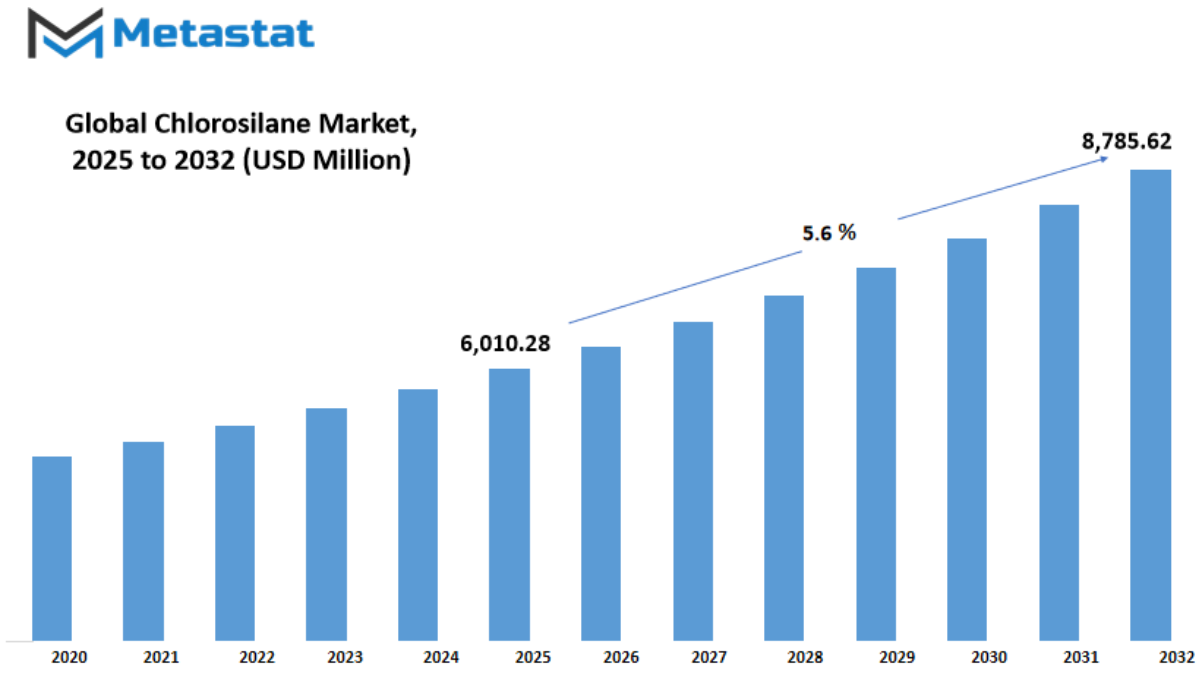
GROWTH FACTORS
The global chlorosilane market is trending steadily, driven by a combination of industrial demand, regulatory hurdles, and forward-looking opportunities. Much of the growth ties to an increasing semiconductor and electronics industry. As the global economy continues to go digital, demand for microchips and other electronic materials has exploded. Chlorosilane, required as it is in the manufacture of high-purity silicon utilized within semiconductors, sits in high demand. As nations are racing headlong towards technological development and digital infrastructure, the demand is likely to remain firm in the future as well.
There is also a huge thrust for the global chlorosilane market from the solar energy sector. The move towards cleaner energy sources has resulted in a huge increase in the manufacturing of solar panels, which are dependent upon polysilicon a product obtained with the help of chlorosilane. As increasing numbers of governments and private investors are turning to solar power, the demand for chlorosilane in this field keeps rising. This is consistent with the international drive for green practices, further cementing the material's significance within industries centered on environmental solutions.
Even with these encouraging drivers, however, there are obstacles to be found within the global chlorosilane market. Environmental issues related to the manufacturing and application of chlorosilane have resulted in stringent regulations in most parts of the world. Such regulations increase the difficulty for new entrants to join the market and create operational issues for existing players. Secondly, it costs a lot to produce and poses safety concerns owing to the dangerous nature of chlorosilane. These conditions impose restrictions on how quickly and far the market can expand, especially in nations with more restrictive compliance regimes or underdeveloped chemical infrastructure.
On the positive side, innovation is opening up new uses. Advances in purification technologies are facilitating the manufacture of higher grades of chlorosilane that can be utilized in more sophisticated industries. This not only increases efficiency but also addresses the increasing standards of quality for industries such as electronics and photovoltaics. Though confronted with challenges from regulation and production risks, it will also benefit from changing energy policies and industrial demand. Those who accommodate cleaner, safer production techniques and move in the direction of the global shift towards a changed energy landscape will probably enjoy a competitive advantage in this dynamic market.
MARKET SEGMENTATION
By Type
The global chlorosilane market will experience significant activity as a function of its vital position in manufacturing silicones and semiconductors. As companies persist in calling for more light materials, heat resistance, and weatherability, chlorosilanes will continue to play a vital role in fulfilling these demands. From the electronics in people's homes to building materials, their suitability and chemical properties make them irreplaceable. As emerging technologies become more prevalent, their application in leading-edge applications will only increase in momentum with time.
An important segment of the global chlorosilane marketis the segmentation based on type, which consists of Methylchlorosilanes, Dimethylchlorosilanes, Trichlorosilane, and other special types. Of those, Methylchlorosilanes are prominent, with a widespread contribution of $2,611.79 million. This unique type has a essential role in the production of silicone polymers, which unearths standard usage in industries together with automotive, electronics, and healthcare. Its growth mirrors the extended reliance on silicone-based structures in modern-day product design and overall performance.
Dimethylchlorosilanes and Trichlorosilane are also gaining traction with forte coatings, adhesives, and excessive-purity silicon production applications. Trichlorosilane, especially, is used notably within the sun energy zone with applications in polysilicon manufacturing for photovoltaic cells, making it a link among raw substances and smooth electricity solutions, which provides depth to the price chain of the global chlorosilane market. As the global drive for renewable strength gains momentum, call for these materials is in all likelihood to stay on an ascending trend.
The other types of chlorosilanes, while smaller in scale, also find application in niche uses and advanced product creation. These subtypes tend to address particular end-use needs, allowing producers to refine their products for performance and effectiveness. With continued rapid technological innovation and the increased demand for high-performance products, every type of chlorosilane will have its share. The global chlorosilane marketwill not only fund extensive industrial processes but also determine how future products are produced, enhanced, and maintained.
By Application
The global chlorosilane market is predicted to experience large trends within the future years, fueled by means of the various uses it encompasses. Chlorosilanes are vital chemical materials used substantially within the manufacture of silicones products, which make their manner into existence through merchandise which include adhesives, sealants, and personal care. With elevated call for for high-grade substances and smooth technology, chlorosilanes are increasingly more offering as essential industrial inputs.
One of the principle makes use of chlorosilanes is in the manufacturing of polymers. These polymers are hired in many sectors, which include automobile, creation, and textiles. While producers are seeking out greater energy and versatility, chlorosilane-derived polymers advantage from thermal stability and chemical resistance. This is bound to drive further development, particularly as industries attempt to create lighter yet stronger parts without any sacrifice in quality.
Silicones, the other key application sector, is a strong contributor to the market's size. Due to their stability in extreme environments and temperatures, silicones produced through chlorosilanes find applications in hundreds of industries ranging from healthcare to electronics. Their usability as insulators, lubricants, or water-repellent coverings makes them critical in maximum production operations. As patron electronics and healthcare technologies enhance, demand for high-performance silicone components will keep to growth.
In the semiconductor market, chlorosilanes are applied to generate high-purity silicon necessary to fabricate chips and other electronic products. As the world advances toward quicker and more power-green devices, the semiconductor enterprise will rely more and more on chlorosilane-based totally strategies. Artificial intelligence, renewable electricity, and data infrastructure all name for sophisticated semiconductors, which in go back will see endured sturdy demand for chlorosilanes.
Outside of these vast classes, chlorosilanes are also employed in specialised niches along with laboratory studies and distinctiveness coatings. Small-extent even though they will be, those specialized niches preserve to power the increase of the global chlorosilane marketwith the aid of growing new avenues for overall performance substances. Combined, all of these different applications imply that the chlorosilane market will continue steady growth bolstered by technological improvement as well as rising industrial demand across many markets.
By End-User
The global chlorosilane market will develop step by step in the coming years, due to its good sized makes use of in specific industries. Chlorosilanes are mainly utilized in production silicon products, particularly within the electronics, car, and creation sectors. The chemicals are vital within the production of semiconductors, optical fibers, water repellents, and adhesives. With growing call for for clever devices and electric powered motors, companies are searching for substances which could decorate performance and sturdiness chlorosilane is the best in shape for this motive.
Chlorosilanes are also considerably utilized within the electronics quarter to make excessive-purity silicon that is used in semiconductors and solar cells. As the sector is shifting closer to easy electricity and digitalization, the call for stylish electronic additives will boom. Nations that closely put money into infrastructure for solar energy and clever grids are producing extra call for chlorosilanes, which further fuels the improvement of this segment. Furthermore, with the increased amount of consumer electronics and communication at high speeds, manufacturers are looking for more efficient means of manufacturing high-quality components once again increasing the utilization of chlorosilanes.
The vehicle industry is also experiencing a change. With greater electric and hybrid cars coming onto the market, there's an accelerated call for advanced sealing materials, adhesives, and silicon elements. Chlorosilane-based totally compounds make a contribution to enhanced warmness, corrosion, and growing old resistance, as required in motors under harsh working situations. In modern day automobiles, where both electronics and performance are essential, the application of hard, light substances is even greater applicable. Chlorosilanes provide these technical requirements without weight.
Chlorosilanes locate software in construction for floor treatment in addition to for creating water-repellent paints for concrete and glass. With increasing urbanization, mainly within the emerging economies, the call for materials which could extend the lifespan of buildings and infrastructure is developing. Chlorosilane products provide a guard towards weathering and lower renovation prices. The latter is a massive attraction for developers and engineers searching for structures with an extended lifespan and less maintenance. Even clever production answers, past conventional homes, are turning toward materials that offer capability and protection.
The other end-use markets, such as textiles and healthcare, are slowly appreciating the benefits of chlorosilane compounds. Whether to develop protective coatings on textile materials or make medical devices that require flexible and robust materials, the potential for chlorosilane use is growing. As industries continue to demand efficiency, performance, and sustainability, chlorosilane is sure to be an important element of the chemical supply chain in various industries.
|
Forecast Period |
2025-2032 |
|
Market Size in 2025 |
$6,010.28 million |
|
Market Size by 2032 |
$8,785.62 Million |
|
Growth Rate from 2025 to 2032 |
5.6% |
|
Base Year |
2024 |
|
Regions Covered |
North America, Europe, Asia-Pacific Green, South America, Middle East & Africa |
REGIONAL ANALYSIS
The chlorosilane market covers a large geographical stretch worldwide, influenced by the different industrial requirements and development levels of every region. The United States dominates in North America owing to high demand in semiconductor and chemical process industries. Canada and Mexico also contribute uniformly, supported by rising investments in solar panel production and electronics. This area is favored by technological development and a high concentration of key market players that contribute towards propelling innovation and demand for high-purity chlorosilanes for high-end applications.
In Europe, the chlorosilane market is underpinned by robust manufacturing facilities, especially in the region of Germany, the UK, France, and Italy. Germany is notable because of its base of engineers and steady emphasis on chemical and photovoltaic industries. Environmental standards in this region are higher, and hence came the innovations in chlorosilane-based product handling and processing that is safe. While demand in this region is moderate with respect to other regions, Europe remains a stable and mature market owing to well-developed industries as well as regulatory frameworks.
Asia-Pacific is rated as the most dynamic region, primarily based on the speedy industrial growth of China, India, Japan, and South Korea. China, more than others, leads the way in production and consumption due to massive electronics production and a growing solar power industry. India is following with developing chemical industries and government incentives towards more renewable projects. Japan and South Korea add to this through innovation and advanced electronic component demand. With favorable government policies and reduced cost of production, this region is bound to continue being a driving force for the global chlorosilane market.
In South America, the market is registering slow but progressive movement. Brazil takes the lead with rising industrial production and initiatives to expand solar power projects. Argentina additionally makes its contribution, albeit on a reduced scale, as each international locations try to trap investments and enhance their manufacturing base. While now not as advanced as other areas of the globe, South America has potential possibilities as agencies are seeking for to implement more recent technologies and enhance manufacturing.
The Middle East & Africa place, although nonetheless developing, is selecting up steam, mainly inside the GCC countries and South Africa. The GCC nations are diversifying their economies, and industries which include production and electricity are generating new possibilities for chlorosilane-primarily based products. Egypt and South Africa are also transferring forward slowly however in reality through the construction of infrastructure and industrial development. Although difficulties still exist in accessing more advanced technologies and experienced personnel, continuing research and development activities are likely to provide new avenues for expansion in the market in the coming years.
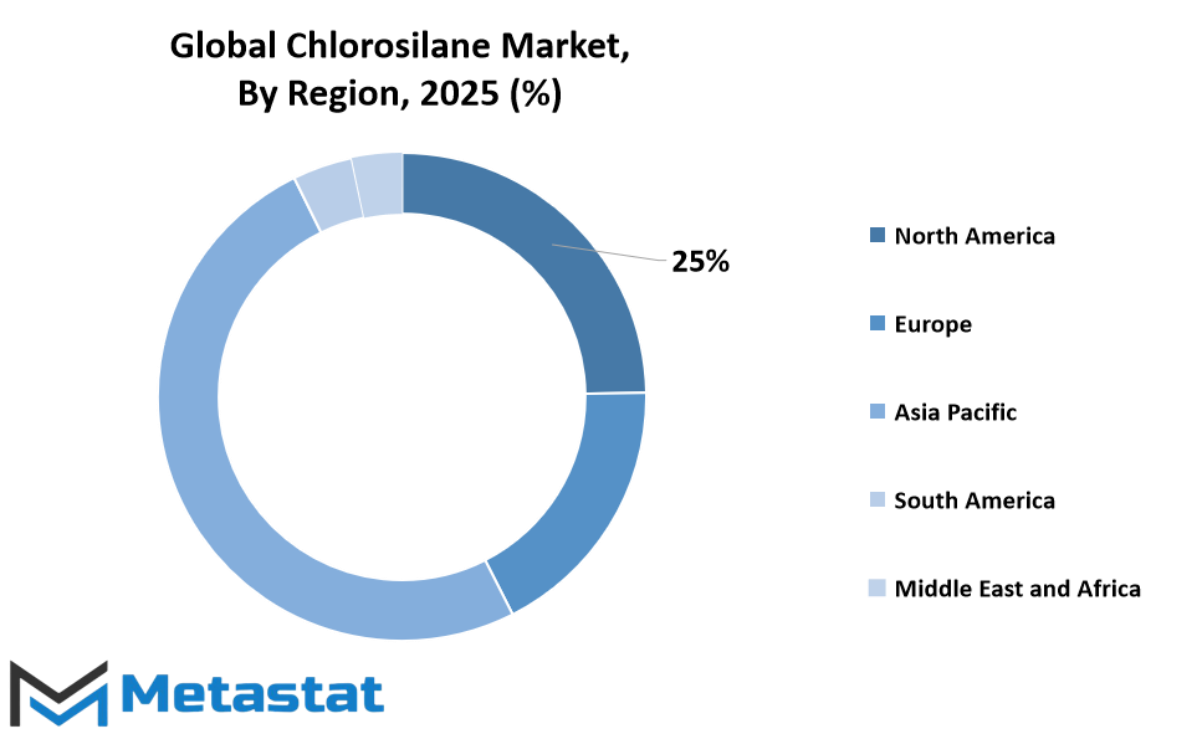
COMPETITIVE PLAYERS
The global chlorosilane market will retain to draw interest due to its crucial position inside the production of excessive-purity silicon, that's used throughout industries like electronics, construction, and car. With the call for semiconductors and sun panels displaying no symptoms of slowing, the global chlorosilane market will in all likelihood see a consistent growth inside the want for chlorosilanes. These chemical compounds are key intermediates in generating silicon-primarily based merchandise, specifically within the manufacturing of polysilicon, that is important for photovoltaic cells and microchips.
As industries attention extra on sustainability and technological enhancements, chlorosilanes will continue to be tremendous because of their efficiency in turning in the purity levels required for superior programs. Manufacturers are investing in higher purification technologies to fulfill growing global standards, making high-purity chlorosilane a concern. Countries with sturdy electronics or renewable strength sectors are mainly contributing to this growth. Increased investment and rules helping solar electricity may even push the marketplace forward, in particular in areas aiming for strength independence or decrease emissions.
The global chlorosilane market is competitive, with key players continuously operating to decorate production efficiency and decrease environmental impact. Companies like abcr GmbH, Henan Tianfu Chemical Co., Ltd., Chemcon Speciality Chemicals Limited, and Evonik Industries AG are actively contributing to technological innovation and deliver chain stability. Others which includes Connex Pharma, Elkem ASA, Tokuyama Corporation, Merck, High-Purity Silicon Corporation, and Gelest Inc. Are also pushing the boundaries of what is feasible with chlorosilane use, particularly in superior fabric sciences and electronics-grade silicon.
Challenges still exist, specially in managing and storage, as chlorosilanes are enormously reactive with moisture and require strict safety protocols. There’s also stress on manufacturers to reduce waste and emissions, which has caused the adoption of cleaner technologies. While those hurdles might also sluggish manufacturing for a few, in addition they offer opportunities for businesses to face out thru better protection standards, green practices, and innovation in packaging and delivery.
Looking beforehand, the chlorosilane market will in all likelihood grow consistent with global call for for cleanser strength, faster electronics, and sturdy production substances. Key gamers will keep to steer by using improving their chemical processes, assembly environmental standards, and exploring new applications for chlorosilanes. With solid investment and an enterprise-wide push towards quality and sustainability, the destiny of the market seems promising.
Chlorosilane Market Key Segments:
By Type
- Methylchlorosilanes
- Dimethylchlorosilanes
- Trichlorosilane
- Others
By Application
- Polymers
- Silicones
- Semiconductors
- Others
By End-User
- Automotive
- Electronics
- Construction
- Others
Key Global Chlorosilane Industry Players
- abcr GmbH
- Henan Tianfu Chemical Co.,Ltd.
- Chemcon Speciality Chemicals Limited
- Evonik Industries AG
- Connex Pharma
- Elkem ASA
- Tokuyama Corporation
- Merck
- High-Purity Silicon Corporation
- Gelest Inc.
WHAT REPORT PROVIDES
- Full in-depth analysis of the parent Industry
- Important changes in market and its dynamics
- Segmentation details of the market
- Former, on-going, and projected market analysis in terms of volume and value
- Assessment of niche industry developments
- Market share analysis
- Key strategies of major players
- Emerging segments and regional growth potential



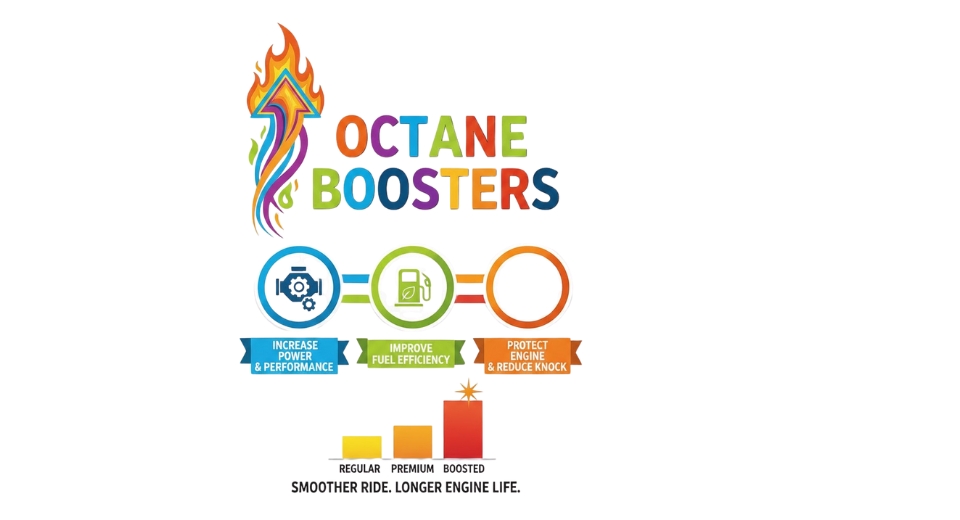

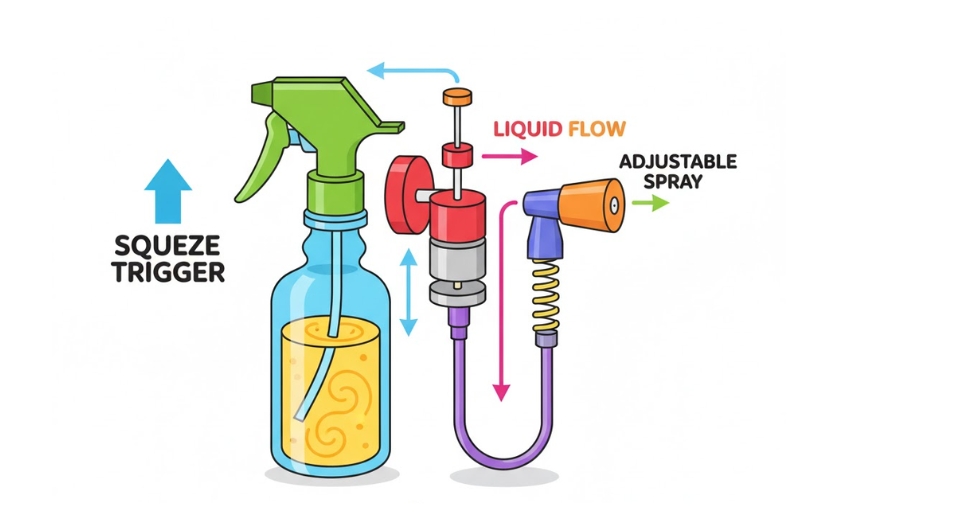
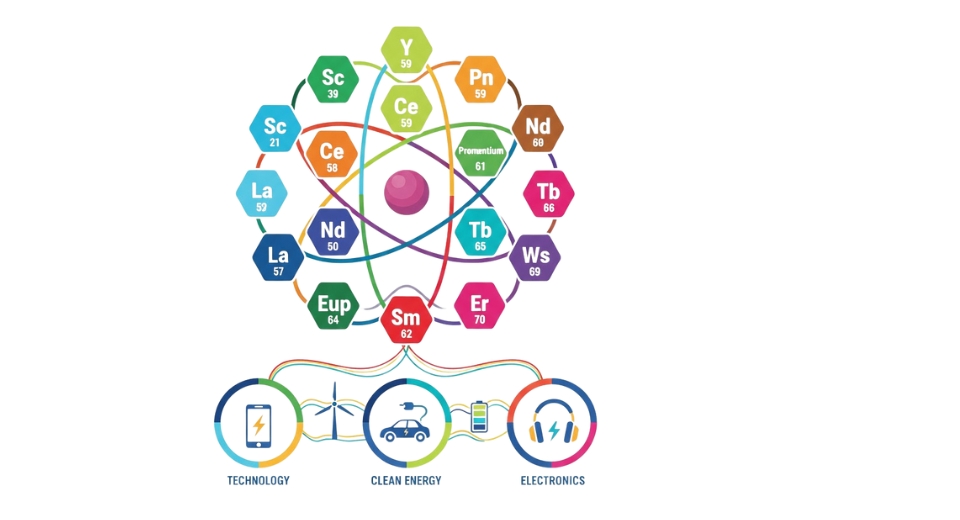

 US: +1 3023308252
US: +1 3023308252






